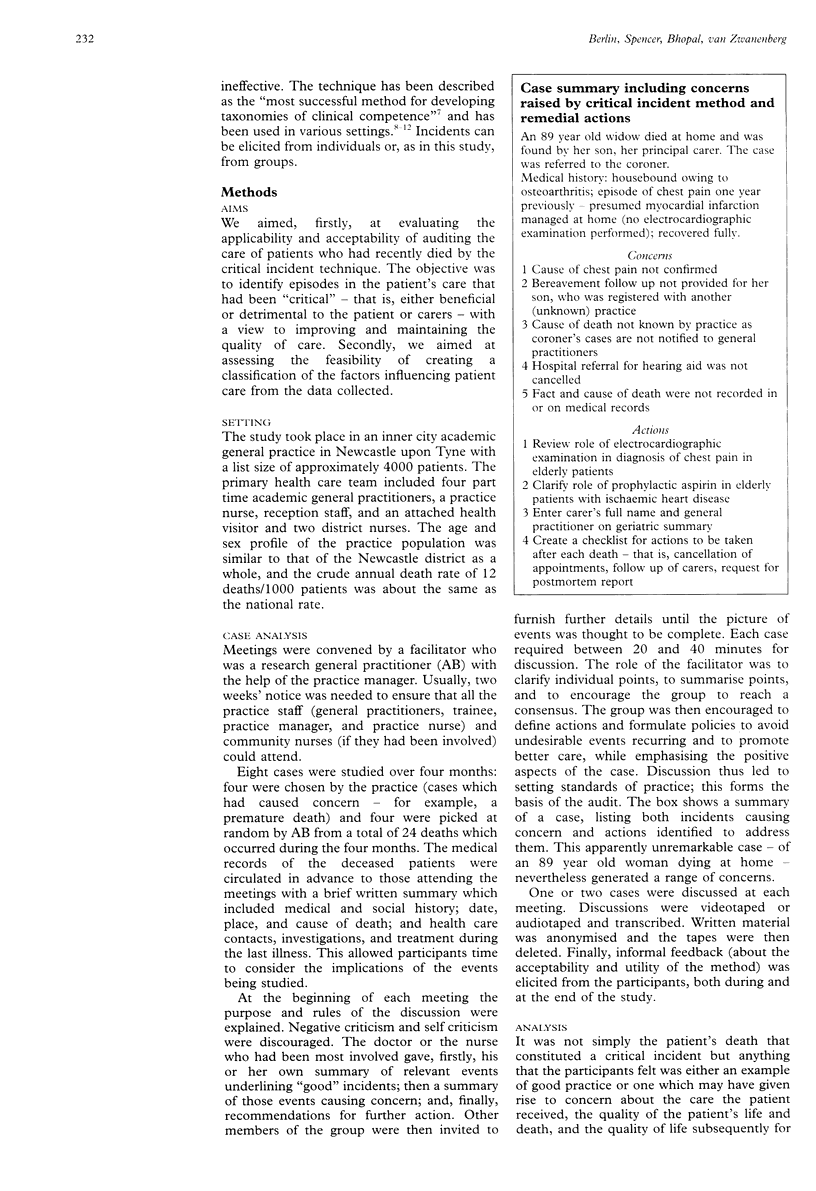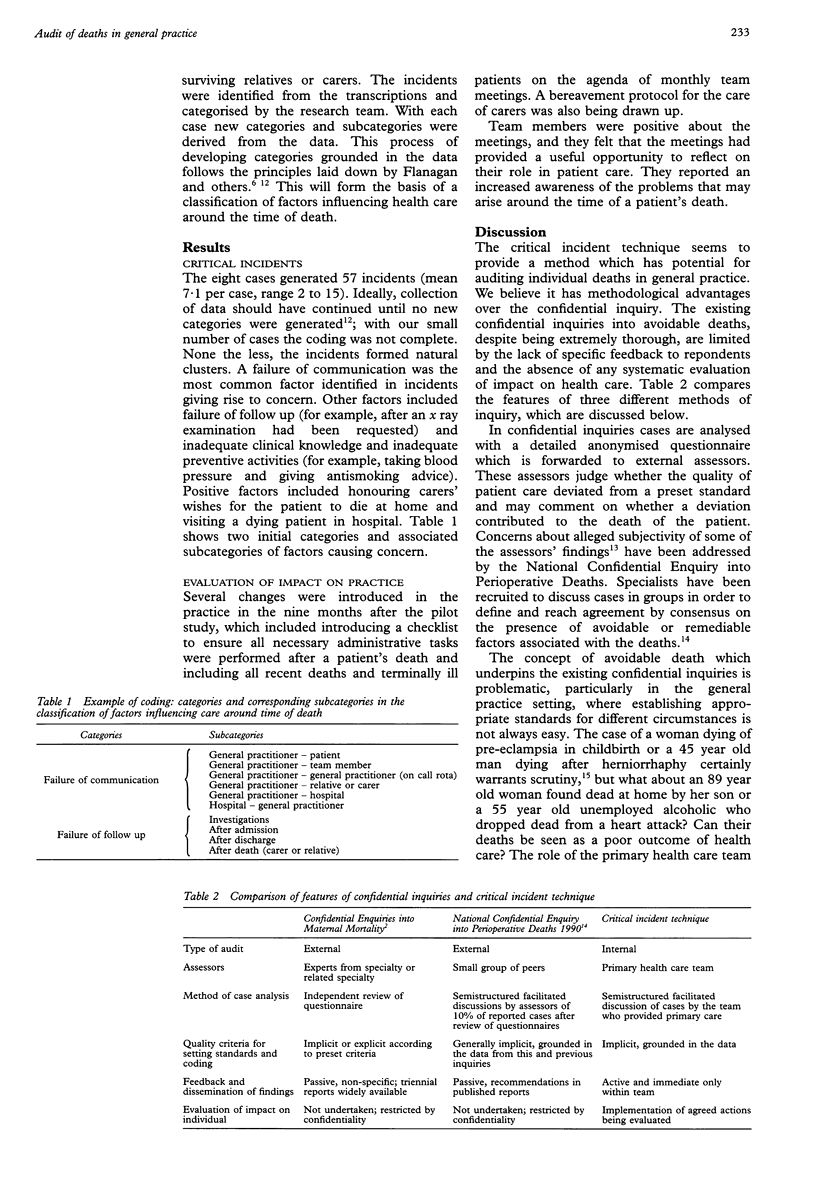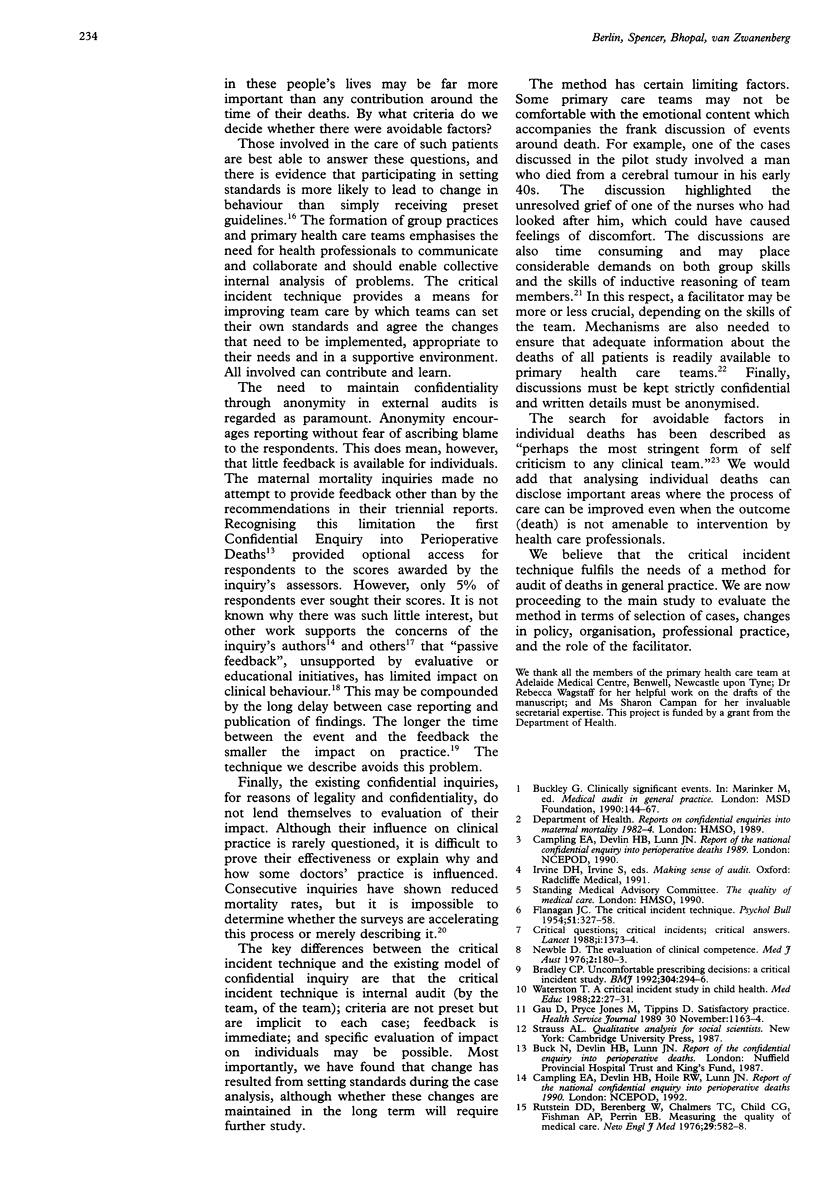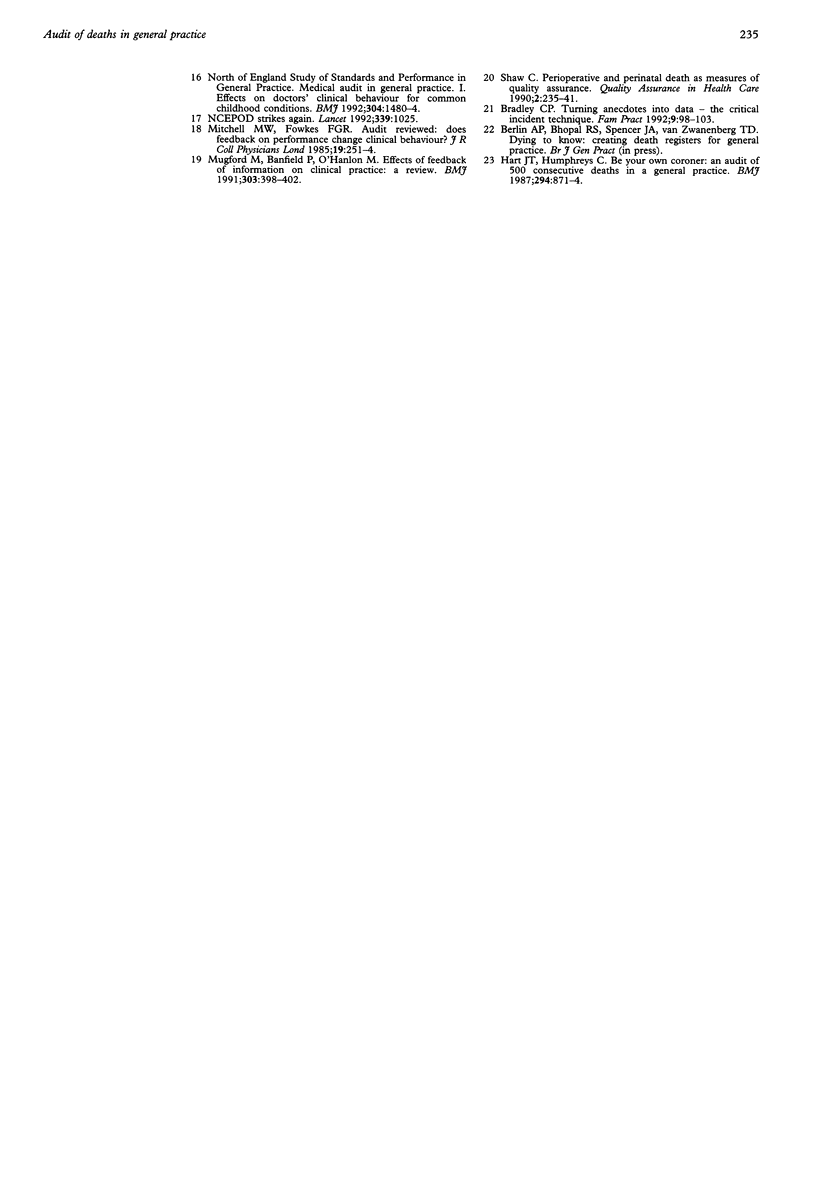Abstract
OBJECTIVE--To develop and pilot a method for conducting an audit of deaths in general practice by the critical incident technique. DESIGN--Prospective use of the technique within a primary health care team, with the aid of a facilitator, to analyse the events surrounding patients' deaths. SETTING--One inner city academic general practice. PARTICIPANTS--Practice team, comprising general practitioners, trainee, practice manager, practice nurse, and attached health visitor and district nurses. MAIN MEASURES--Identification and classification of critical incidents associated with the case studies of eight recently decreased patients in the practice and subsequent impact on the practice. RESULTS--Among the eight case studies, 57 critical incidents were identified (mean 7.1 per case, range 2 to 15). A failure of communication was the most common factor identified in incidents giving rise to concern, but positive factors in patient care were also identified. Changes in practice included developing protocols for follow up of bereaved relatives and carers and a checklist to ensure completion of administrative follow up tasks resulting from the patient's death; cases of recent deaths and terminally ill patients were reviewed monthly. The practice team found the method acceptable and felt that the discussions had provided useful opportunities for reflecting on their role in patient care. CONCLUSIONS--The critical incident technique fulfils the needs of an audit of deaths in general practice; however, further evaluation based on more cases from different practices is now required.
Full text
PDF




Selected References
These references are in PubMed. This may not be the complete list of references from this article.
- Bradley C. P. Turning anecdotes into data--the critical incident technique. Fam Pract. 1992 Mar;9(1):98–103. doi: 10.1093/fampra/9.1.98. [DOI] [PubMed] [Google Scholar]
- Bradley C. P. Uncomfortable prescribing decisions: a critical incident study. BMJ. 1992 Feb 1;304(6822):294–296. doi: 10.1136/bmj.304.6822.294. [DOI] [PMC free article] [PubMed] [Google Scholar]
- FLANAGAN J. C. The critical incident technique. Psychol Bull. 1954 Jul;51(4):327–358. doi: 10.1037/h0061470. [DOI] [PubMed] [Google Scholar]
- Hart J. T., Humphreys C. Be your own coroner: an audit of 500 consecutive deaths in a general practice. Br Med J (Clin Res Ed) 1987 Apr 4;294(6576):871–874. doi: 10.1136/bmj.294.6576.871. [DOI] [PMC free article] [PubMed] [Google Scholar]
- Mitchell M. W., Fowkes F. G. Audit reviewed: does feedback on performance change clinical behaviour? J R Coll Physicians Lond. 1985 Oct;19(4):251–254. [PMC free article] [PubMed] [Google Scholar]
- Mugford M., Banfield P., O'Hanlon M. Effects of feedback of information on clinical practice: a review. BMJ. 1991 Aug 17;303(6799):398–402. doi: 10.1136/bmj.303.6799.398. [DOI] [PMC free article] [PubMed] [Google Scholar]
- Newble D. I. The evaluation of clinical competence. Med J Aust. 1976 Jul 31;2(5):180–183. [PubMed] [Google Scholar]
- Rutstein D. D., Berenberg W., Chalmers T. C., Child C. G., 3rd, Fishman A. P., Perrin E. B. Measuring the quality of medical care. A clinical method. N Engl J Med. 1976 Mar 11;294(11):582–588. doi: 10.1056/NEJM197603112941104. [DOI] [PubMed] [Google Scholar]
- Shaw C. D. Perioperative and perinatal death as measures for quality assurance. Qual Assur Health Care. 1990;2(3-4):235–241. doi: 10.1093/intqhc/2.3-4.235. [DOI] [PubMed] [Google Scholar]
- Waterston T. A critical incident study in child health. Med Educ. 1988 Jan;22(1):27–31. doi: 10.1111/j.1365-2923.1988.tb00405.x. [DOI] [PubMed] [Google Scholar]


